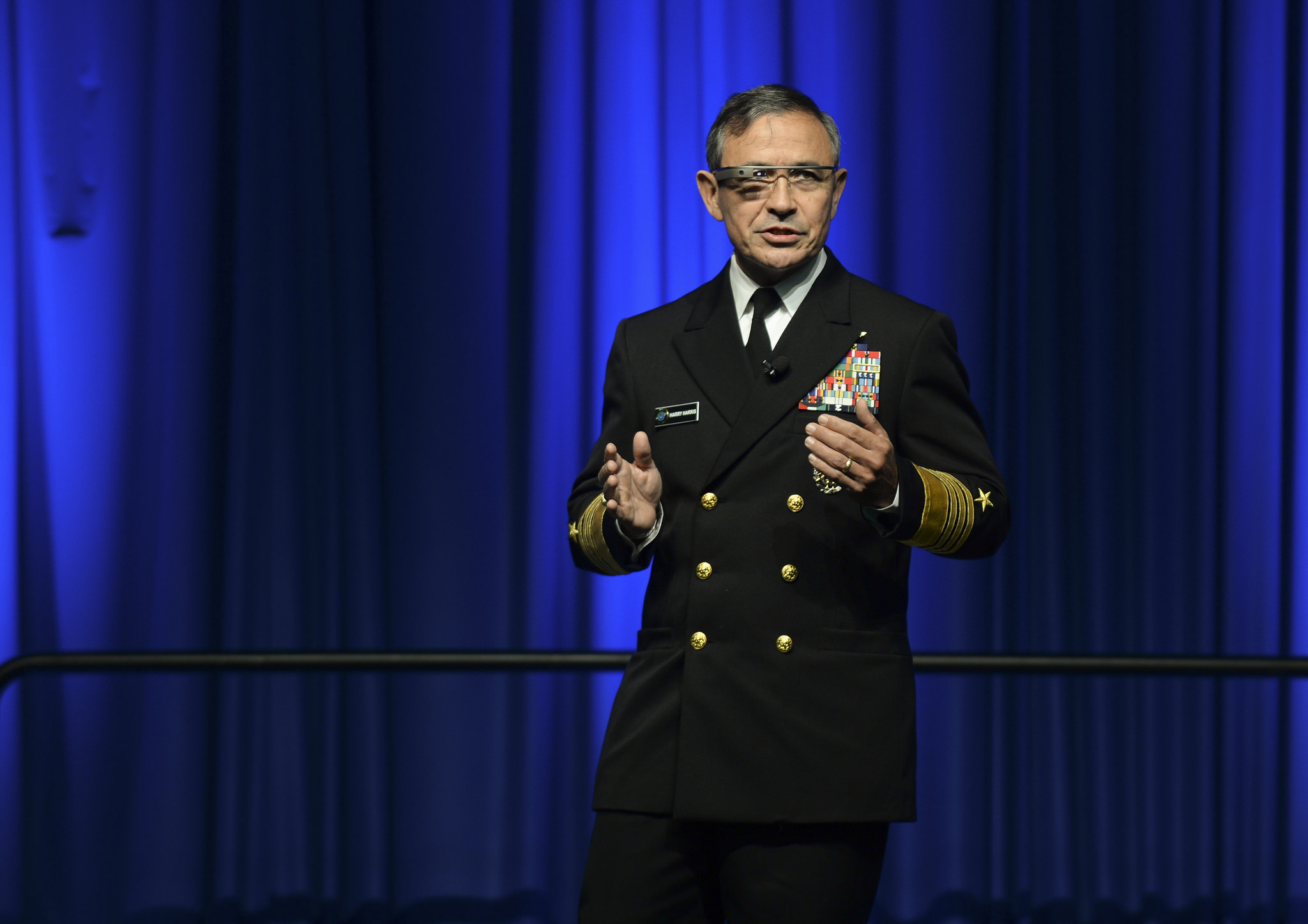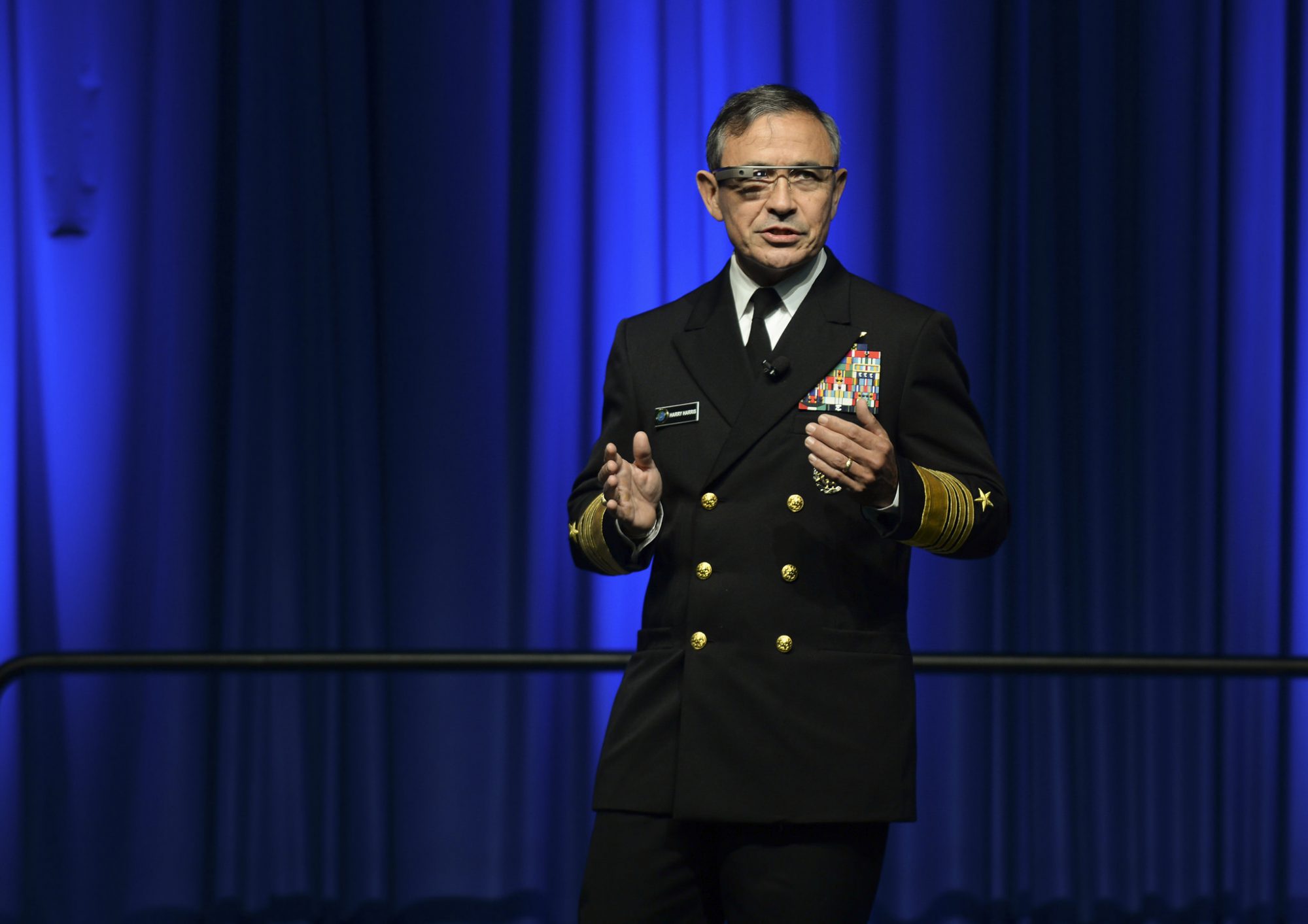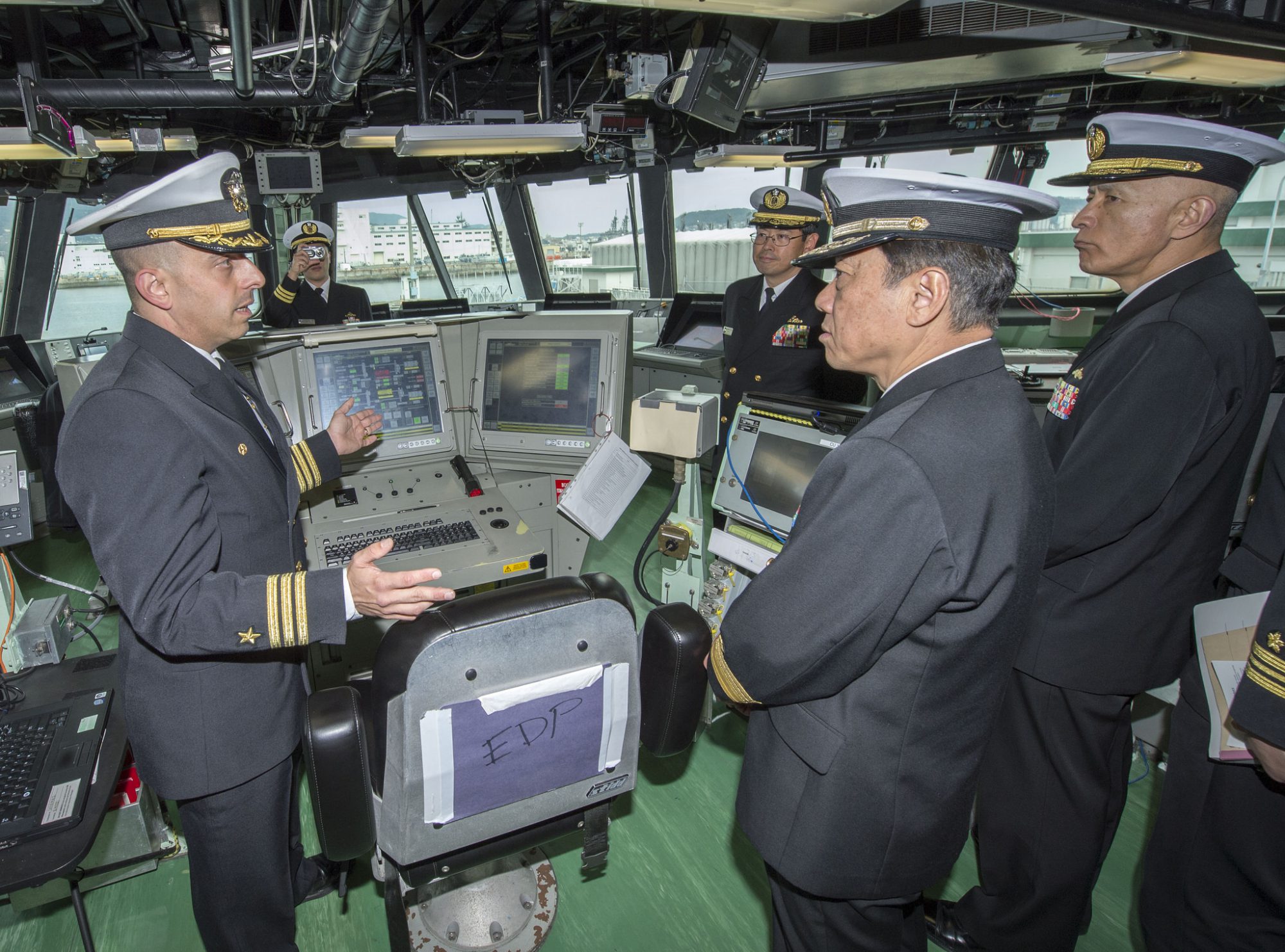BY JOSHUA WELLE
While the post-9/11 wars waged, the Department of Defense (DoD) did not focus on two imperatives to ensure military superiority: technology innovation and talent management.[i] To millennials, these concepts are linked.[ii] The Pew Research Center found that 24 percent of those born between 1980 and 1995 believe their generation’s uniqueness is tied to technology. At Harvard University, the most popular undergraduate course is Introduction to Computer Science (CS50).[iii] Secretary of Defense Ashton Carter, realizing the Iraq and Afghanistan conflicts required most of its the Pentagon’s attention,[iv] is now making drastic changes to fix the technology gap and talent management challenges to create the “Force of the Future.”[v]
The recruiting statistics are disconcerting. A report from the Army War College explains that their personnel system is “trapped in the past”[vi] and pundits suggest action must be taken.[vii] [viii] Federal News Radio reports only 2.3 percent of 35,000 surveyed students plan to work in the federal government.[ix] The Office of Personnel Management (OPM) determined that only 7 percent of the government workforce were under the age of thirty in 2013, compared to 20 percent in 1975, suggesting the “‘government will be lost’ without technologically savvy staff able to carry agencies into a digital future.”[x] Anecdotally, whether walking the halls at the John F. Kennedy School of Government at Harvard University or the Pentagon (both institutions with which I am familiar), few people want to serve in the DoD or know there are fulfilling careers available there.
I believe the American people lack the full story. After a decade serving in uniform and nearly two years as a software company co-founder, I see the DoD as more innovative than both pundits and citizens realize. This article fills the knowledge gap on what DoD innovation efforts exist today, but also recommends improvements to the ongoing efforts and encourages job seekers to pursue a career in uniform or as a DoD civilian.
Innovation in the Digital Age
Secretary Carter administered a $521 billion base defense budget in FY2015, with an additional $64 billion in funding for ongoing operations in Iraq and Afghanistan.[xi] The job is colossal: fighting terrorism, managing security assistance missions in Iraq and Afghanistan, and deterring adversaries capable of cyber, nuclear, and space attacks. At the same time, he is instituting reforms to ensure what Wired magazine calls a “cultural and logistical overhaul that will make the modern military-industrial complex nimble enough to provide the kind of innovation and support its twenty-first-century fighting force needs.”[xii] Secretary Carter’s Force of the Future must “stay ahead of a changing world, to stay competitive, to stay aware of new generations and attract them to [the] mission of serving the country, and to stay abreast of technology.”[xiii]
Macroeconomic changes and adversarial advancements in technology are creating urgency for greater DoD innovation. In The Solution Revolution, Bill Eggers argues that “society is witnessing . . . a shift from a government-dominated model to one in which government is just one player among many.”[xiv] Eric Schmidt, the former CEO of Google, characterizes the twenty-first century as a (digital) world that will reshape people, business, and nations.[xv] The digital age reflects a new type of society, one in which everything is connected to everything else, buttressed by space satellites, telecommunication systems, and cloud-enabled and ubiquitous wireless access. Secretary Carter is responsible for creating processes and systems to adapt to these changing times.
DoD Innovation: Science and Sustainability
Today, Google, Apple, and Facebook are on the technology cutting edge, able to scale with budget surpluses.[xvi] Other Silicon Valley corporations drive advancement in artificial reality, robotics, and renewable battery supplies. Historically, however, the private sector was not the innovation leader; the federal government was the source of disruptive change.
Founded in 1958, following the Soviet Sputnik launch, the Defense Advanced Research Projects Agency (DARPA) was the exemplar of technological progress. DARPA’s risk-taking culture delivered innovation: ARPAnet (the Internet), the global positioning system (GPS), digital speech translation, and gallium arsenide (a wireless friendly semiconductor).[xvii] More recently, “. . . DARPA’s [sub-program TRANSAPP] is making smartphones battlefield-ready, so that soldiers can take full advantage of mobile technology that’s improved the lives of countless civilians.”[xviii]
The DoD also funds small business innovation. Established in the 1980s, the Small Business Administration created the Small Business Technology Transfer (STTR) and Small Business Innovation Research (SBIR) fund [xix] These programs accelerate research and the expansion of public/private sector partnerships to include joint ventures. The STTR requires collaboration with a science research institution, while SBIR provides non-dilutive capital for entrepreneurs. Today, all of the military branches offer technology transfer grants to the private sector. The DoD disbursed more than one billion dollars towards small business innovation in FY2015.
In addition to connecting technologies to small businesses, the DoD is driving innovation for sustainable and ecological systems. Navy innovation includes: solid-state lighting, shipboard energy dashboards, stern flaps, and a bulbous bow to reduce fuel consumption.[xx] The Army established the Center for Advancement of Sustainability Innovation (CASI), which increases sustainability for water, waste resources, and natural infrastructure.[xxi] Recently, the “NATO Zero Base Camp” initiative called for “alternative energy sources and developing multinational smart energy projects” to reduce dependency on fossil fuels and reduce costs.[xxii]
Cmdr. Matthew Kawas, USS Fort Worth (LCS 3) crew 103 commanding officer, describes the readiness control officer console to members of the Japan Maritime Self-Defense Force during a tour of the bridge aboard the littoral combat ship. (Photo Credit: Mass Communication Specialist 2nd Class Conor Minto, Flickr)
The Air Force is reducing its reliance on energy and hazardous chemicals, implementing water resource management, and maintaining force readiness in the face of climate change. In 2013, acting Under Secretary of the Air Force Dr. Jamie Morin said, the Air Force is “focusing on the capability we get out of energy, each gallon, each watt of electricity . . . and will not accept the notion that one has to choose between energy efficiency and mission accomplishment.”[xxiii] Moreover, there is an immediate call for greater collaboration with technologies that use long-lasting batteries, wearable solar, fuel cells, and microgrids.[xxiv] The DoD rarely receives recognition for energy efficiency but has strategic goals to be 25 percent energy independent by 2025.[xxv]
Increase Technology Adoption
Though the DoD has an Operational Energy Strategy committed to greater resource independence and clean technology, Defense Secretary Carter should go further in at least three realms to increase technology adoption.[xxvi]First, high-tech systems are overfunded while low-end system architecture receives little attention. Computer systems supporting parts logistics, training, and maintenance are behind the technology curve. The DoD spent $194 million on one-hundred Tactical Tomahawk missiles in 2015,[xxvii] but it continues to use broken human resource management systems that anger servicemen.[xxviii] Soldiers and sailors are reliant on notebooks, clipboards, and networked laptops while their civilian counterparts exercise productivity with Apple Watches and cloud technology. Modern workflow solutions are needed to capture data analytics and increase defense readiness. These systems are equally important to the missiles and satellite defense infrastructure.
Second, the entire DoD must expand workforce cyber education to both protect the network and create a culture of digital warriors. Cyber security is essential to national defense and only a small segment understands it well. While service members must complete computer-based information assurance and cyber awareness training annually, this is not enough. Cyber security training must be offered face-to-face to allow dialogue about network architecture and security protocols. Navy ships fail cyber security inspections because of poor control of network administrative privileges, lack of anti-virus updates to security patches, and non-routine backups to router and switch configurations.[xxix] Improving the DoD’s cyber security education and reinforcing the importance of individual responsibility in network defense is paramount.
Lastly, the DoD must embrace technological risk and transform buying requirements to achieve an innovative future. Former Secretary of the Army John McHugh explains, “In life—especially in the Pentagon—visions and ideas give way to priorities and realities.”[xxx]Secretary Carter’s predecessor, Charles Hagel, established a Defense Innovation Initiative (DII) paradoxically at odds with Congress’s Defense Federal Acquisition Regulation buying regulations.[xxxi] Civilian and military defense leaders lack the purchasing flexibility to prototype and test systems during pilot programs.[xxxii] Industry acquisition norms, cyber security, and contracting restrictions limit procurement professionals from buying DII new technology. The 2014 transition to the Risk Management Framework (RMF), a more flexible buying regime,[xxxiii] was a start, but Secretary Carter must go further. He should create an educational program to train government civilians in the RMF processes and incentivize new buying methods.
Army Major Scott Sendmeyer (center) leads the Campaign Development Team aboard the amphibious command ship USS Mount Whitney (LCC/JCC 20) in support of Joint Task Force (JTF) Odyssey Dawn. (Photo Credit: Mass Communication Specialist 2nd Class Daniel Viramontes, Flickr)
DoD Innovation: People
Achieving scientific and sustainable innovations is only possible with talented workers. Secretary Carter explains that “in the face of generational, technological, and . . . labor market changes—we in the Pentagon must think . . . outside of our five-sided box” and attract the best and brightest.[xxxiv] He enlisted acting Under Secretary of Defense Brad Carson to orchestrate an overhaul of DoD’s human capital process—realizing that promotion, rewards, and assignment processes were outmoded compared to top-tier companies.[xxxv]
The Force of the Future is taking shape. Secretary Carter established a Defense Innovation Unit (DIU-X) in Sunnydale, CA, ten miles from Facebook’s headquarters, which DIU-X fast-tracks technology from the private sector to the Pentagon.[xxxvi] The DoD is working with LinkedIn’s CEO Reid Hoffman to revamp the military billeting system to appeal to the millennial generation.[xxxvii] Secretary Carter authorized internships for DoD’s mid-grade officers at SpaceX, Google’s Alphabet, and Amazon to learn technology adoption strategies.[xxxviii] He also recruited Chris Lynch, a serial entrepreneur, to lead the Defense Digital Service, a new office to reform information technology processes and cloud architecture delivery strategies.[xxxix][
Secretary Carter is also preparing the DoD for an inclusive and transparent future to attract top talent. Women are authorized to serve in combat roles as “Army Rangers and Green Berets, Navy SEALs, Marine Corps infantry, Air Force parajumpers and everything else that was previously open only to men.”[xl] The decades-old retirement regime is being redesigned to mirror the civilian 401K systems. Servicewomen will be granted twelve-week maternity leave, double the previous policy. Active-duty members are able to take career sabbaticals to pursue private sector opportunities.[xli] Other forthcoming initiatives include changing height, weight, and age standards for military acceptance for critical billets in cyber security and data science.[xlii]These policies take time to institute; Secretary Carter’s leadership is creating a firm foundation.
Accelerate the Digital Workforce
General Electric’s iconic former CEO Jack Welch explained that “no company can sustain high productivity without culture change.”[xliii] McKinsey & Company posits that culture change requires creating consistent role models, adjusting formal structures to support desired shifts, and developing talent and skills.[xliv] Applying that framework, Secretary Carter’s Force of the Future can go further to accelerate the digital workforce.
The DoD can create role models by training its Admirals and Generals to be generationally inclusive.[xlv]Despite the importance of hard hours of combat operations and deployed missions, leaders must be more accepting of input from lower ranks. Many leaders foster a toxic environment unappealing to millennials because junior personnel are not heard and decisions are top down. The Harvard Business Review explains, “overconfident, self-centered, productive, and rule-following employees were more likely to be toxic workers.”[xlvi]George Reed describes toxic military leaders as those that are self-serving, inflexible, and petty.[xlvii] Strict compliance to standards and rules is fundamental to military operations, yet rule-abiding leaders stifle innovation, suppress risk taking, and increase operational stress.[xlviii] There is good news – toxic leaders are pushed out of the military.[xlix] Organizational climate surveys are required within ninety days of commanding officers reporting to a new assignment and bad climate results are a punishable offense. In 2015, many Navy captains were fired for culture violations.[l] Retired General David Barno writes that training role models at senior levels “is an essential investment in producing an adaptive officer corps that is well-prepared for a wide range of future challenges.”[li]
If the DoD desires innovation, it must flatten the hierarchical structure. The DoD requires an inclusive, 5-Generational (5G) ecosystem.[lii] This model appreciates the differences of each generation but focuses on the commonalities across all employees. On the battlefield, yes, command authority is singular with few exceptions. In the boardrooms (and wardrooms), however, organizational culture should leverage cross-generational collaboration. Former US army engineer Rob Albritton agrees, explaining the DoD needs to “recognize the situations where its hierarchical military organization is counterproductive to its mission” and flatten the organization.[liii]Millennials “expect information immediately and communicate through text messages, [and they] want nothing to do with hierarchy and reject traditional top-down communication.”[liv] The Future Force cannot look to the most senior officials for answers; a 5G community allows all voices to be heard.[lv] Walter Isaacson, in the forward to General Stanley McChrystal’s Team of Teams, agrees: in today’s world, creativity is a collaborative endeavor.[lvi]
The Armed Forces have a demand for integrated technology solutions. (Photo Credit: Ted Eytan, Flickr)
Secretary Carter’s Force of the Future does not currently meet talent and skills development needs.[lvii] Detailing officers to fellowships at technology companies and increasing graduate school education is a positive start; however, Admirals and Generals need enterprise skills to transition upward to echelons leading thousands of troops in disparate missions. Senior leaders must have a certain pedigree of skills. If not, the DoD must recruit reservists into senior roles, leveraging their private sector acumen.
Tim Kane’s widely quoted Bleeding Talent explains that officers should be able to exit and re-enter and re-exit and re-enter, and to serve as long a career as they want without career-tenure constraints.[lviii] As a Time reporter explains, “why in the world are we gearing up for cyber warfare and simultaneously barring veterans now working for Symantec, Cisco, or Google to rejoin the ranks? That is folly.”[lix] In an age of increased threats, and decreasing resources, the DoD must look to all sources of power to protect the America’s interests.
The Way Forward
This is not the first article to call for DoD personnel management improvements; it will not be the last. Danger is clear and present. The chasm between the private sector and the DoD is too wide. The existing retention, promotion, and performance systems do not support America’s national security needs.[lx] However, Secretary Carter is poised to create the conditions for change. Few Secretaries have had the professional agility to oversee wars abroad while cultivating a revolution in technology adoption and human capital management. Unfortunately, Secretary Carter is approaching the end of his tenure. Republicans and Democrats should either retain him as Secretary of Defense or solidify the new initiatives underway. Preparing men and women for war and ensuring the United States retains technical superiority goes beyond politics.
These changes are also essential for inspiring the younger generations to pursue a military career. College graduates: Consider the DoD as the place to innovate and create the foundational skills for exceptional service over a lifetime. Congress: Support the Force of the Future as necessary, progressive steps to increase force structure readiness. Secretary Carter’s plan is needed to attract, retain, and reward the best.[lxi]
In 2012, the National Association of Colleges and Employers reported college students most value opportunity for personal growth, job security, and good benefits—in that order.[lxii]As a veteran, I believe no career meets those criteria better than the military. Aspiring leaders should consider the DoD the first chapter in a career of public service. Whether on the front lines or in support roles, advancing your education or testing your skills in corporate America—the DoD is more flexible than many believe. Secretary Carter and others know re-designing the workforce is required and the DoD is poised to make those changes with technology and human wellness front and center.
[i] Carter, Ashton. “Remarks on “Building the First Link to the Force of the Future” (George Washington UNiversity).” U.S. DEPARTMENT OF DEFENSE. Accessed February 18, 2016. http://www.defense.gov/News/Speeches/Speech-View/Article/630415/remarks-on-building-the-first-link-to-the-force-of-the-future-george-washington.
As Delivered by Secretary of Defense Ash Carter, George Washington University Elliott School of International Affairs, Washington, D.C.
[ii] “Millennials: A Portrait of Generation Next. Confident. Connected. Open to Change,” Pew Research Center, 24 February 2010. Accessed 15 February 2016. http://www.pewsocialtrends.org/2010/02/24/millennials-confident-connected-open-to-change/.
[iii] Natasha Bertrand, “We Took Harvard’s Incredibly Popular Computer Science Course and Can See Why Students Love It,” Business Insider, 16 October 2014. Accessed 11 February 2016. http://www.businessinsider.com/why-students-love-harvards-cs50-2014-10.
[iv] Barnes, Julian. “Win Today’s War, Gates Says.” Los Angeles Times. May 14, 2008. Accessed February 22, 2016. http://articles.latimes.com/2008/may/14/nation/na-gates14.
[v] Andrew Tilghman, “Pentagon’s Quiet Push for Military Personnel Reform,” Military Times, 12 August 2015. Accessed 11 February 2016. http://www.militarytimes.com/story/military/pentagon/2015/05/11/personnel-reform-push/70895094/.
[vi] Casey Wardynski, David S. Lyle, and Michael J. Colarusso, “Towards a U.S. Army Officer Corps Strategy for Success: Retaining Talent,” Strategic Studies Institute, U.S. Army War College, January 2010. Accessed 18 February 2016. http://www.strategicstudiesinstitute.army.mil/pdffiles/PUB965.pdf.
[vii] David Barno, “Military Brain Drain,” Foreign Policy, 13 February 2013. Accessed 21 February 2016. http://foreignpolicy.com/2013/02/13/military-brain-drain/.
[viii] Fred Kaplan, “Why Is the Army Losing so Many Talented Midlevel Officers?” Slate, 16 January 2008. Accessed 1 February 2016. http://www.slate.com/articles/news_and_politics/war_stories/2008/01/an_officer_and_a_family_man.html.
[ix] Jolie Lee, “Only 2.3 Percent of College Students Plan to Work for Federal Government, Survey Finds,” Federal News Radio Podcast, 6 February 2012. Accessed 21 February 2016. http://federalnewsradio.com/management/2012/02/only-23-percent-of-college-students-plan-to-work-for-federal-government-survey-finds/.
[x] Rachel Feintzeig, “U.S. Struggles to Draw Young, Savvy Staff,” Wall Street Journal, 10 June 2014. Accessed 13 February 2016. http://www.wsj.com/articles/u-s-government-struggles-to-attract-young-savvy-staff-members-1402445198.
[xi] Congressional Budget Office, “The Budget and Economic Outlook: 2016 to 2026,” January 2016.
[xii] Jess Hempel, “DOD Head Ashton Carter Enlists Silicon Valley to Transform the Military,” Wired, 18 November 2015. Accessed 15 February 2016. http://www.wired.com/2015/11/secretary-of-defense-ashton-carter/.
[xiii] Ashton Carter, “Drell Lecture: ‘Rewiring the Pentagon: Charting a New Path on Innovation’,” U.S. Department of Defense, 23 April 2015. Accessed 21 February 2016. http://www.defense.gov/News/Speeches/Speech-View/Article/606666/drell-lecture-rewiring-the-pentagon-charting-a-new-path-on-innovation-and-cyber.
[xiv] William D. Eggers and Paul Macmillan. The Solution Revolution: How Business, Government, and Social Enterprises Are Teaming up to Solve Society’s Toughest Problems (Cambridge: Harvard Business Review Press, 2013), 3.
[xv]Eric Schmidt and Jared Cohen, The New Digital Age: Transforming Nations, Businesses, and Our Lives (Random House, 2013), 19.
[xvi] Nieva, Richard. “Alphabet? Google? Either Way, It’s Ready to Rumble.” CNET. January 29, 2016. Accessed February 10, 2016. http://www.cnet.com/news/larry-page-sergey-brin-google-alphabet/.
[xvii] “Fifty Years of DARPA: Hits, Misses and Ones to Watch.” New Scientist. Accessed February 27, 2016. https://www.newscientist.com/article/dn13907-fifty-years-of-darpa-hits-misses-and-ones-to-watch/.
[xviii] Adam Clark Estes, “Inside the Military’s Secretive Smartphone Program,” Gizmodo, 5 August 2014. Accessed 20 February 2016. http://gizmodo.com/inside-the-militarys-secretive-smartphone-program-1603143142.
[xix] “SBIR STTR Program Overview,” Small Business Innovation Research, October 2015. Accessed 15 January 2016. https://www.sbir.gov/about/about-sbir.
[xx] “Great Green Fleet,” U.S. Navy. Accessed 8 January 2016. http://greenfleet.dodlive.mil/energy/great-green-fleet/.
[xxi] “Center for the Advancement of Sustainability Innovations (CASI) Engineer Research and Development Center Fact Sheet Article View.” Center for the Advancement of Sustainability Innovations (CASI) Engineer Research and Development Center Fact Sheet Article View. Accessed February 20, 2016. http://www.erdc.usace.army.mil/Media/FactSheets/FactSheetArticleView/tabid/9254/Article/476729/center-for-the-advancement-of-sustainability-innovations-casi.aspx.
[xxii] “Towards a Zero Footprint Camp,” Atlantic-community.org. Accessed 2 February 2016. http://www.atlantic-community.org/-/towards-a-zero-footprint-camp.
[xxiii] “US Air Force Releases Strategic Energy Plan,” Sustainable Business.com, 4 April 2013. Accessed 18 January 2016. http://www.sustainablebusiness.com/index.cfm/go/news.display/id/24738.
[xxiv] Fiscal Year 2014 Operational Energy Annual Report, http://www.acq.osd.mil/eie/Downloads/OE/FY14%20OE%20Annual%20Report.pdf
[xxv] Department of Defense, Strategic Sustainability Performance Plan. January 2015. Accessed 10 February 2016. http://www.denix.osd.mil/sustainability/upload/DoD-SSPP-FY15-Final.pdf.
[xxvi] Department of Defense, Operational Energy Strategy: Implementation Plan, March 2012. Accessed 11 February 2016. http://www.acq.osd.mil/eie/Downloads/OE/20120306_OE_Strategy_Implementation_Plan.pdf.
[xxvii] “RGM/UGM-109 Tomahawk Cruise Missile,” AeroWeb. Accessed 10 February 2016. http://www.bga-aeroweb.com/Defense/Tomahawk.html.
[xxviii] David Barno and Nora Bensahel, “From Carbon Paper to the Cloud: Fixing the Pentagon’s Back Office,” War on the Rocks, 12 January 2016. Accessed 10 February 2016. http://warontherocks.com/2016/01/from-carbon-paper-to-the-cloud-fixing-the-pentagons-back-office/.
[xxix] “Celebrating Victories,” Navy Board of Inspection and Survey Newsletter, March/April 2014. Accessed 12 February 2016. http://webcache.googleusercontent.com/search?q=cache:pq3tXRiGlNkJ:www.public.navy.mil/fltfor/insurv/INSURV%20Bytes/2015/INSURV-Newsletter-Issue%204-MAR-APR-2015.pdf.
[xxx] John McHugh, “AUSA 2015 Keynote Address,” 12 October 2015. Accessed 21 February 2016. http://www.army.mil/article/157170/October_12__2015____21st_Secretary_of_the_Army_Hon__John_McHugh_AUSA_2015_keynote_address/.
[xxxi] “Welcome to BAI – Your RMF, DIACAP and FISMA Resource Center,” Risk Management Framework. Accessed 21 February 2016. https://rmf.org/. This website explains the broad implications for the transition from legacy Certification and Accreditation (C&A) processes to adaptive acquisition models.
[xxxii] Davis, Josh. “Three Common Objections When Selling SaaS.” Workforce Management Channel. September 06, 2012. Accessed February 22, 2016. https://workforcemanagementchannel.com/2012/09/06/three-common-objections-when-selling-saas/.
“What Is RMF?” What Is RMF? Accessed February 20, 2016. https://rmf.org/index.php/what-is-rmf.html.
[xxxiv] Ashton Carter, “Remarks on ‘Building the First Link to the Force of the Future,” U.S. Department of Defense, delivered at George Washington University, 18 November 2015. Accessed 18 January 2016. http://www.defense.gov/News/Speeches/Speech-View/Article/630415/remarks-on-building-the-first-link-to-the-force-of-the-future-george-washington.
[xxxv] Tilghman, Andrew. “‘Force of the Future’: Career Flexibility, Fewer Moves.” MilitaryTimes. September 1, 2015. Accessed February 20, 2016. http://www.militarytimes.com/story/military/careers/2015/08/28/force-future-report-ash-carter-review/32476549/.
[xxxvi] Markowitz, Eric. “Pentagon In Silicon Valley: What’s The Government Up To?” International Business Times. October 15, 2015. Accessed February 20, 2016. http://www.ibtimes.com/pentagon-silicon-valley-whats-government-2141778.
[xxxvii] Hennigan, W.J. “Defense Secretary Ashton Carter Courts Tech Leaders in Silicon Valley.” Los Angeles Times. August 28, 2015. Accessed February 27, 2016. http://www.latimes.com/nation/nationnow/la-na-ash-carter-silicon-valley-20150828-story.html.
[xxxviii] Carter, Ashton. “Remarks on “Building the First Link to the Force of the Future” (George Washington UNiversity).” U.S. DEPARTMENT OF DEFENSE. Accessed February 18, 2016. http://www.defense.gov/News/Speeches/Speech-View/Article/630415/remarks-on-building-the-first-link-to-the-force-of-the-future-george-washington.
[xxxix] http://www.defenseone.com/technology/2015/11/meet-head-pentagons-agile-new-digital-service/123825/
[xl] Matthew Rosenberg and Dave Philipps. “All Combat Roles Now Open to Women, Defense Secretary Says,” New York Times, 3 December 2015. Accessed 15 January 2016. http://www.nytimes.com/2015/12/04/us/politics/combat-military-women-ash-carter.html?_r=0.
[xli] “Career Intermission Program (CIP) Frequently Asked Questions.” CIP Frequently Asked Questions. Accessed February 20, 2016. http://www.public.navy.mil/bupers-npc/support/21st_Century_Sailor/tflw/Pages/FrequentlyAskedQuestions.aspx.
[xlii] “Office of Secretary of Defense, Joshua Marcuse (staff).” Telephone interview by author. January 20, 2015.
[xliii] Scott Keller and Carolyn Aiken, “On Performance Culture,” McKinsey & Company, 2004. Accessed 2012. http://www.oncourse.com.au/articles/McKinsey On Performance Culture.pdf.
[xliv] Ibid.
[xlv] David Barno, Nora Bensahel, Katherine Kidder, and Kelley Sayler. Building Better Generals. Center for New American Security Report, October 2013.
http://www.cnas.org/files/documents/publications/CNAS_BuildingBetterGenerals_0.pdf
[xlvi] Nicole Torres, “It’s Better to Avoid a Toxic Employee than Hire a Superstar,” Harvard Business Review Online, 9 December 2015. https://hbr.org/2015/12/its-better-to-avoid-a-toxic-employee-than-hire-a-superstar.
[xlvii] George E. Reed, Tarnished: Toxic Leadership in the U.S. Military (Potomac Books: 2015), 6.
[xlviii] Robert Siegel, “Army Takes On Its Own Toxic Leaders,” National Public Radio News, 6 January 2014.
[xlix] Faram, Mark. “TACAMO Wing CO Fired amid Investigation.” Navy Times. 19 Mar. 2015. Web. 27 Feb. 2016.
[l] Staff Report. “2015 Firings: Commanding Officer, XO and Senior Enlisted,” Navy Times, 31 December 2015. Accessed 3 January 2016. http://www.navytimes.com/story/military/2015/09/15/2015-firings-commanding-officer-xo-senior-enlisted-co-cmc-csc/71885254/.
[li] Barno et al., Building Better Generals, 7.
[lii] Dan Bursch and Kip Kelly. Managing the Multigenerational Workplace. UNC Kenan-Flagler Business School, December 2014. Accessed 15 February 2016. http://www.kenan-flagler.unc.edu/~/media/Files/documents/executive-development/managing-the-multigenerational-workplace-white-paper.pdf.
[liii] Robert Albritton, “Four Steps the Department of Defense Can Take to Fix Its Broken Personnel System,” War on the Rocks, 21 December 2015. Accessed 15 February 2016. http://warontherocks.com/2015/12/four-steps-the-department-of-defense-can-take-to-fix-its-broken-personnel-system/.
[liv] Bursch, 8.
[lv] Albritton.
[lvi] McChrystal, Stanley A., Tantum Collins, David Silverman, and Chris Fussell. Team of Teams: New Rules of Engagement for a Complex World. New York: Penguin Group, 2015. Print, 6.
[lvii] Myers, Meghann. “Rising Innovation Star Knocks Navy’s Career Rigidity.” Navy Times. 31 Aug. 2015. Web. 27 Feb. 2016.
[lviii] Kane, Tim. Bleeding Talent: How the US Military Mismanages Great Leaders and Why It’s Time for a Revolution. New York: Palgrave Macmillan, 2012. Print.
[lix] Mark Thompson, “Why Can’t the U.S. Military Grow Better Leaders?” Time, 21 January 2013. Accessed 4 February 2016. http://nation.time.com/2013/01/21/why-cant-the-u-s-military-grow-better-leaders/.
[lx] Welle, Joshua W., Graham Plaster, Kate Kranz, and John Ennis, eds. In the Shadow of Greatness: Voices of Leadership, Sacrifice, and Service from America’s Longest War: The U.S. Naval Academy Class of 2002. Annapolis, MD: Naval Institute, 2012. Print.
[lxi] Shane, Leo. “The Pentagon’s ‘Force of the Future’ Plan Just Got Trashed in Congress.” MilitaryTimes. 25 Feb. 2016. Web. 27 Feb. 2016.
[lxii] “Federal Leaders Face Challenges Attracting Top College Graduates To Government Service,” Partnership for Public Service and The National Association of Colleges and Employers, 6 February 2012. Accessed 15 February 2016. http://ourpublicservice.org/publications/viewcontentdetails.php?id=82.
Cover Photo Credit: U.S. Pacific Fleet via Flickr.





